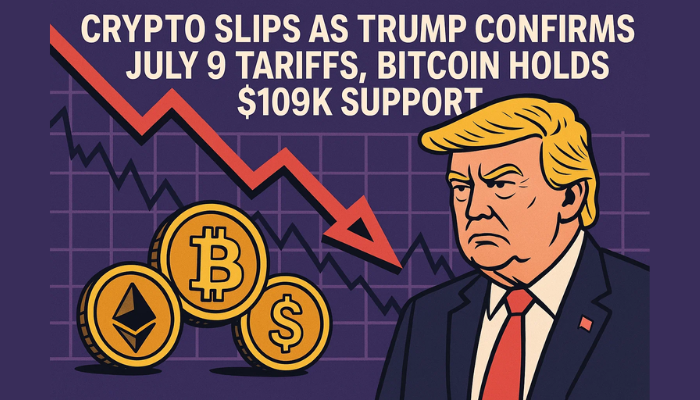- Home /
- News /
- Farewell 2018
Farewell 2018
2018 offered plenty of action for forex traders driven by fundamentals.

Where Markets Started 2018
2018 is almost over. It’s been quite a year to be honest; at this time last year, Cryptocurrencies were in the middle of the “gold rush” with Bitcoin trading above $16,000. Oil was in the middle of the uptrend which had lasted for two years and it was trading above $60, both UK Brent crude and US WTI crude Oil. The US Dollar had been on a strong bearish trend at the end of last year despite the FED being in the middle of a steep rate hike path, so the picture looked pretty bleak for the Buck.
The global economy was running on four cylinders as the economic data from the developed economies as well as from emerging markets showed in Q4 in 2017. As a result, risk assets such as commodity Dollars were also in demand and stock markets had been trading on a bullish trend for many years, closing the year near the highs.
What happened During 2018
Donald Trump’s Reign

I told you the US will lead the global economic growth once again
As soon as this year started, the US President Donald Trump threatened different countries with tariffs. He placed Steel and Aluminium tariffs, mainly targeting China, Canada and Mexico. Then the US tariffs spread to other good, particularly targeting China. The White House administration also threatened with tariffs of European cars which hasn’t materialized so far.
In fact, a lot of what happened this year in financial markets came from Donald Trump’s actions which were labelled catastrophic at first, but now a year later they don’t seem so apocalyptic. Trump ripped up the Iran agreement that Barack Obama had struck earlier.
Donald Trump also ripped up the North American Free Trade Agreement (NAFTA). That seemed like shot in the leg, but North American countries struck another agreement more than a month ago which is now called USMCA. Donald Trump tweeted on Friday that the US looses around $76 billion in legal trade alone with Mexico, not including the money that is transferred by drug activities and other illegal activities, so supposedly the US should benefit from the new trade agreement.
The Trade War
The trade war with China reached it’s peak in Autumn as the US introduced another batch of tariffs on Chinese good worth $200 billion on top of the previous $50 billion. China responded with tariffs on Soybeans and other US agricultural products as well as for US cars which went up from 15% to 40%.
So, it was trade war at full force and it seems like the Chinese economy is starting to feel the pressure as growth has softened, while direct foreign investments decreased considerably this year. But, Donald Trump and the Chinese President Xi reached a truce in the G20 summit last month. China removed the extra 25% tariff for US cars and it seems like they will find a common ground, but that’s not too sure yet at this moment.
Economic Slowdown
The global economy slowed down considerably this year. As we mentioned, in 2017 the global economies were feeling great as they were expanding pretty fast. But, that was part due to the monetary stimulus from central banks. The major central banks have started to turn off the cash tap with the ECB ending the quantitative easing (QE) programme in December.
As a result, we have seen a slowdown in most developed economies apart form the US and in emerging markets. That hurt the sentiment in financial markets and sent the stock markets tumbling. The trade war also contributed to the negative sentiment. The stock markets ended the year much lower and the bearish price action continued until the last few days of 2018.
Brexit Took A Turn For the Worst
British Prime Minister Theresa May has been trying to struck a deal with the EU before the UK leaves the block. She has done all she could this year, flying back and fourth to Brussels and other European capitals meeting EU officials and European leaders. She finally reached a deal with the EU, but the British Parliament didn’t like it. The Brexit deal leaves the door open for the backstop with Northern Ireland and UK politicians are afraid it will bind the UK to the EU indefinitely.
Theresa May saw the danger that the deal wouldn’t pass the vote in the British Parliament and she pulled it off at the last moment. She went back to the EU in Brussels to get some legal assurance that the backstop won’t be indefinite but time is running out and the chances of the UK crashing out of the EU without a deal have increased considerably. The EU seems reluctant to give legal assurance so we’re in a deadlock, while the opposition in Britain is asking for the deal to be brought to the Parliament for a vote.
Political Tensions in Europe
In the recent years we have seen waves of immigrants flood Europe and the public has been getting increasingly comfortable. This has lead to new political parties emerging in Europe and in some countries the anti establishment parties have even climbed to power. We saw new political parties come to power in Italy last year and in Austria, while in Germany and in Sweden the nationalistic parties performed pretty well this year and is seems like they are set to get to power in next elections if things continue like this.
Brexit happened mostly due to that by the way. In France, the yellow vests protests have been going on for weeks now. They have spread to other parts of Europe and public support for the French President Emanuel Macron has fallen to the lowest levels, below 20%. So, it seems like his time is up.
The Italian Job

Oh Dio, please help us pass the budget at the EU
Speaking of the new anti establishment, the new Italian government which is being directed by Luigi Di Maio and Mateo Salvini constructed the budget for next year and they planned for the deficit to be at around 2.4% of the GDP. But at 130%, the Italian debt is enormous and the EU doesn’t like to have another Greece scenario where other EU member countries will have to bail Italy out.
That would be quite impossible anyway since the Italian economy is around 10 times bigger than that of Greece. So, the EU made it as difficult for Italy to push that budget. They threatened Italy with fines if Italy didn’t reduce the deficit for next year. That hurt the sentiments further and contributed to the decline in the stock markets during the last fee months. Italian politicians resisted for as long as they could, but finally accepted to lower the deficit to 2.04%. But, that is not the end of the Italian Job because I’m pretty sure they will exceed the limit, unless we see a turnaround in the European and the Italian economy.
So, here we are at the end of 2018. We had some volatile markets during this year and they are bound to continue next year. The Italian issue will come to beat us in the backside and bring more volatility, Britain might crash out of the EU as early as next month while the political situation will get more interesting in Europe as the elections for the European Parliament are approaching. We will take a thorough look at what is expected to come next year and what the main fundamental events on next week’s weekend article so come and check us back to see what might move the markets in 2019.
- Check out our free forex signals
- Follow the top economic events on FX Leaders economic calendar
- Trade better, discover more Forex Trading Strategies
- Open a FREE Trading Account


